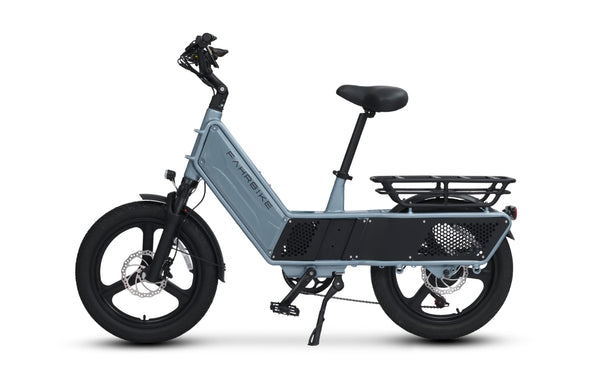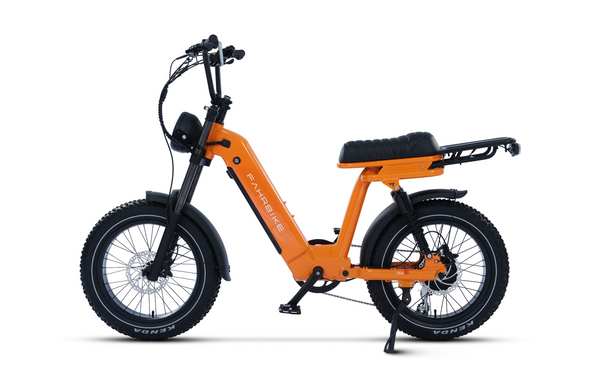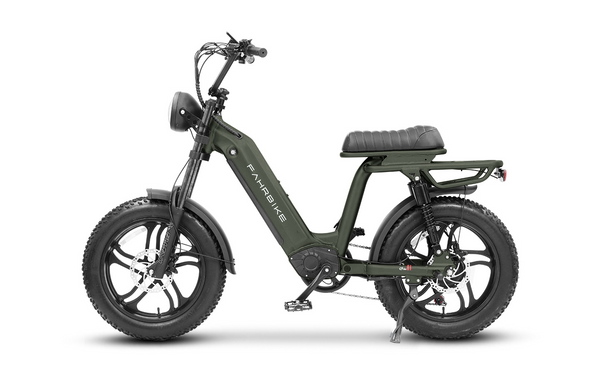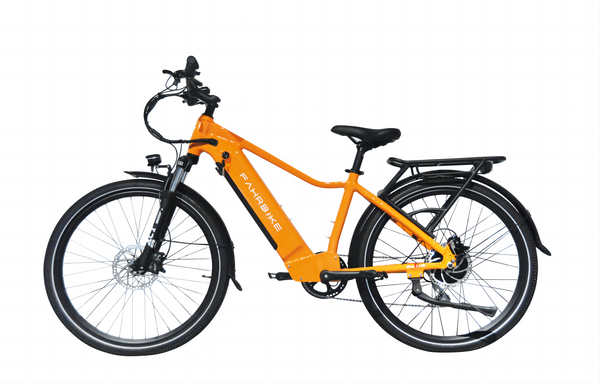One of the most important decisions to make when designing and laying out a vehicle is where to put the engine. The mid-motor configuration and the rear-motor configuration are the two most common options. Both have advantages and disadvantages and are appropriate for different types of vehicles and driving styles.
We'll look at the differences between mid-motor and rear-motor vehicles, such as handling, acceleration, and overall performance, to help you decide which configuration is best for you.

Configuration with a Mid-Motor
A mid-motor vehicle has the engine in the middle of the car, between the front and rear axles. This layout is also known as a "center-engine" configuration. This configuration can be found in a variety of vehicles, including sports cars, supercars, and even race cars.
The Benefits of a Mid-Motor Configuration
The following are some of the benefits of a mid-motor configuration:
1. Better weight distribution
The weight is more evenly distributed between the front and rear wheels when the engine is located in the centre of the vehicle. This improves the vehicle's handling and stability, making it more responsive and agile in corners.
2. Improved centre of gravity
A mid-engine layout can give the car a lower centre of gravity, resulting in better handling and overall performance.
3. Increased manoeuvrability and agility
Because the engine is closer to the centre of the car, a mid-engine layout can improve handling and agility. Better balance and stability can result, making it easier to control in corners and at high speeds.
4. Capabilities for high performance
Mid-motor configurations are common in sports cars, supercars, and race cars, allowing for high-performance capabilities and improved overall performance.
The Difficulties of a Mid-Motor Configuration
The following are some of the difficulties associated with a mid-motor configuration:
1. Complexity and upkeep
A mid-motor configuration is more complicated than a rear-motor configuration, and it may necessitate specialised knowledge and maintenance tools. This can make working on the car more difficult and expensive.
2. Lack of luggage space
Because the engine is in the centre of the vehicle, space for luggage or other storage may be limited. This can be disadvantageous for people who need to transport a large amount of cargo or equipment.
3. Inadequate rear passenger space
Because the engine takes up space normally reserved for back seats, some mid-motor vehicles have limited rear passenger space. This can have an impact on people who need to transport multiple passengers on a regular basis.
4. Increased costs
The complexity of the mid-motor configuration can lead to higher maintenance and repair costs. Furthermore, mid-engine vehicles are typically more expensive than their rear-engine counterparts.
5. Cooling difficulties
Cooling the engine can be more difficult in a mid-engine layout, resulting in increased heat in the cabin and engine wear.
Popular Mid-Motor Vehicle Examples
The Porsche 911, Chevrolet Corvette, and Ferrari F430 are all popular mid-engine vehicles. The mid-engine layout is one of the reasons these cars are known for their high performance capabilities.
The Benefits of a Rear-Motor Configuration
The following are some of the benefits of a rear-motor configuration:
1. Improved traction
The engine's weight over the driven wheels improves acceleration and overall performance, especially in vehicles with a heavy rear end.
2. Increased stability
The rear-engine layout can improve weight balance, improve stability, and make the vehicle easier to control and handle.
3. One-of-a-kind design
Some cars are known for their distinctive design, and one of the reasons for this is the rear-engine layout.
4. Reduced centre of gravity
The use of a rear-motor configuration can result in a lower centre of gravity, which can improve stability and handling at high speeds.
The Difficulties of a Rear-Motor Configuration
The following are some of the difficulties associated with a rear-motor configuration:
1. Dealing with difficulties
The vehicle's heavy weight at the rear can make it more prone to oversteering, a type of handling in which the rear wheels lose traction and cause the car to spin out. Furthermore, in wet or slippery conditions, the rear-motor configuration can cause the car to lose traction and spin out.
2. Restricted engine access
Because the engine is located at the back of the vehicle, it can be more difficult to access for maintenance and repairs, making car maintenance more difficult and costly.
3. Inadequate trunk space
Because the engine is in the back of the vehicle, it can take up space that would normally be reserved for the trunk or cargo area. This is inconvenient for people who need to transport a large amount of luggage or equipment.
4. Diminished visibility
The rear-engine configuration can also have an impact on visibility, as the rear engine can obscure the driver's view, particularly in smaller vehicles.
5. Vibration and noise
Because the engine is closer to the passengers in the rear-motor configuration, there may be more noise and vibration in the cabin.
Popular Rear-Motor Vehicle Examples
The Porsche 911, Volkswagen Beetle, and Chevrolet Corvair are all popular rear-engine vehicles. The rear-engine layout is one of the reasons these cars are known for their distinct design.
Mid-Motor vs. Rear-Motor Comparison
The two configurations are compared using the following criteria:
In terms of operation:
Because of their improved weight distribution and lower centre of gravity, mid-motor vehicles typically outperform rear-motor vehicles. The mid-engine layout improves balance, making the vehicle more responsive and agile in corners.
Rear-motor vehicles, on the other hand, are more prone to oversteering and have a greater chance of losing traction, especially in wet or slippery conditions.
In terms of acceleration:
Because of the increased traction provided by the engine's weight over the driven wheels, rear-engine vehicles have an advantage in acceleration and overall performance.
While mid-motor vehicles provide better handling, they may not have the same acceleration capabilities as rear-motor vehicles.
Regarding overall performance:
Mid-engine vehicles are frequently designed for high-performance capabilities and overall performance. They are commonly found in race cars, supercars, and sports cars.
While rear-motor vehicles provide improved stability, they may not have the same high-performance capabilities as mid-motor vehicles.
Other factors that should be considered are as follows:
Costs of maintenance and repairs: As previously stated, a mid-motor configuration is more complex than a rear-motor configuration and may necessitate more specialised knowledge and tools for maintenance and repairs, resulting in higher costs.
Luggage and passenger space: A mid-motor configuration may have limited luggage or other storage space, as well as limited rear passenger space, whereas a rear-motor configuration may have limited trunk space.
Noise and vibration: Because the engine is closer to the passengers in the rear-motor configuration, there may be more noise and vibration in the cabin.
Fahrbike models that we recommend
Fahrbike is a brand that sells electric bike models with varying features and specifications. Among the most popular models are:
The Fahrbike Terra is a mountain bike. A 750W gear-hub motor powers this fat tyre bike. It can travel up to 60 miles on a single charge and has a top speed of 28 mph. Its fat tyres add stability and traction, making it ideal for off-road adventures.

This is a moped-style electric bike powered by a 750W motor. It can travel 40-60 miles on a single charge and has a top speed of 28 mph. Because of its folding design, it is simple to transport and store, making it an excellent choice for city commuters.

The removable lithium-ion battery in all Fahrbike models can be charged on or off the bike. They also include features like an LCD display, thumb throttle, and pedal assist.
Conclusion
Mid-motor and rear-motor are essentially two subcategories of the same thing. While each motor has minor differences, these two motors accomplish the same thing: they provide more power with less effort.





